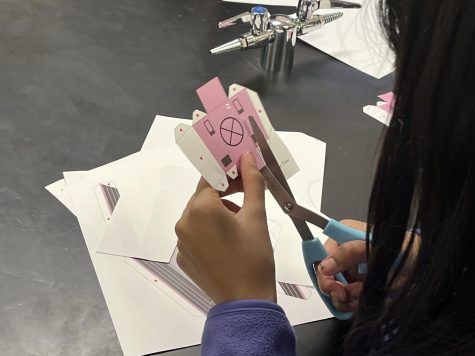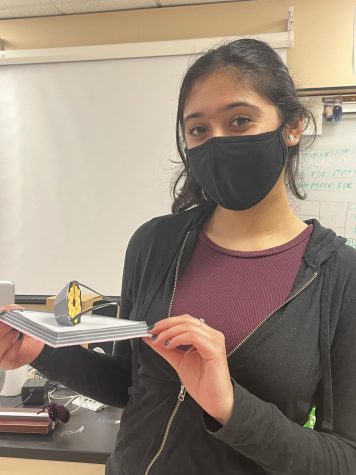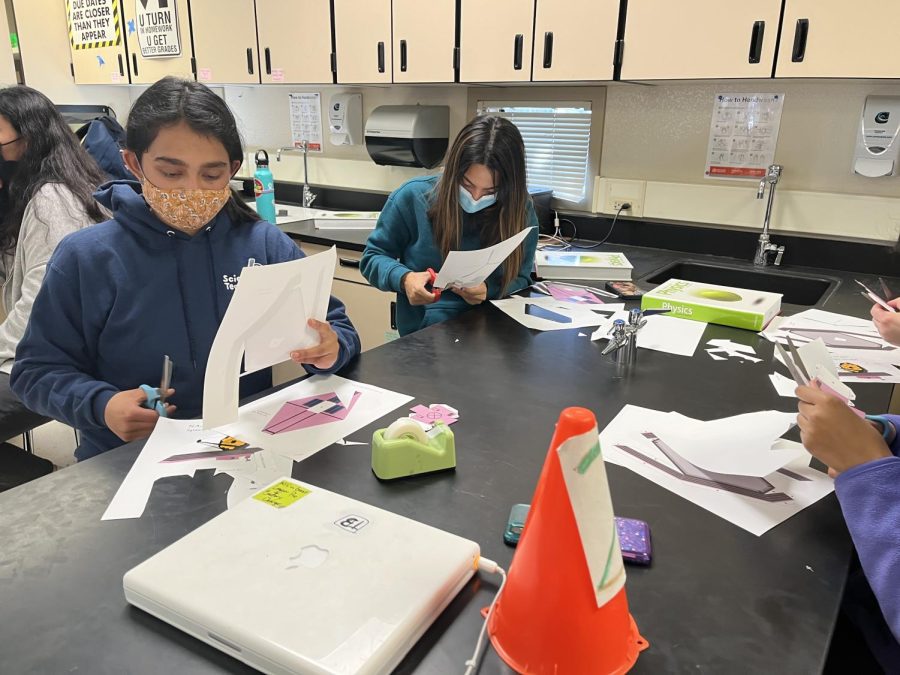Amador Space and Astronomy club models the James Webb Space Telescope
The club met in a science room to put the models together.
This past week, Amador’s own Space and Astronomy Club spent its access class making hand-made models of the James Webb Space Telescope.

“We’re hoping that the telescope can further scientific discoveries by looking back further than we’ve ever seen…we might be able to discover how the universe actually started to form…We’re hoping Webb can help us search for life on other planets too, just like signs of life like traces, like looking for oxygen, carbon,” said Space and Astronomy Co-President Camille Demange (‘22).
The club leaders printed out buildable paper models of the telescope, and club members were able to put together their own mini-machines whilst listening to an informative lesson on how it functions.
“I definitely enjoyed [the activity], I mean I love the people in this club specifically, you can really tell we all genuinely want to learn more, and for most of us we have kept an eye on NASA and what they have been working on so it was fun to make a model of it ourselves since we’ve learned and research so much about it,” said Shreya Modak (‘23), a member of the club.
The telescope is full of high-tech instruments to help us study other galaxies and exoplanets.

“There are four main instruments, all of which have unique fields of view, and unique abilities (spectrographs, coronagraphs) which allow you to basically block out certain parts of the sky, access certain parts of the sky…they’re unique and the same in that they all study infrared, they all go through infrared but they also have cameras, which will allow us to really like look farther into space,” said Space and Astronomy Co-President Anaita Mistry (‘22).
Webb uses the science of redshift and other properties of light to see into space and into the past.
“The farther out you look the more back in time you can see, that just is a property of light, so with James Webb one of the main ideas was: how do we capture more light? So like the big mirror, and the multiple infrared cameras and spectrographs allow for us to get more light and be able to see farther into space,” said Mistry.
The telescope’s job is to replace the much-loved Hubble Telescope, which has been in use since 1990. While Hubble is expected to stay in use for at least another five to ten years, Webb needed to be launched earlier, as it’s further out in space and needs time to calibrate.
“James Webb is gonna be a lot further from earth than Hubble is, so that means it can again see further and it’s not gonna have to deal with interfering with earth’s orbit as much. James Webb is gonna have a lot greater infrared telescope capabilities…Hubble used optical, visible light and ultraviolet which are great for seeing things kinda up closer, but because these further away objects have redshift–like we see them with a lot more like red light–to see these more clearly you need infrared,” said Demange.
The James Webb Space Telescope is bound to make some groundbreaking discoveries for the human race, and is an immense achievement for NASA and the world of science.
Your donation will support the student journalists in the AVJournalism program. Your contribution will allow us to purchase equipment and cover our annual website hosting costs.

